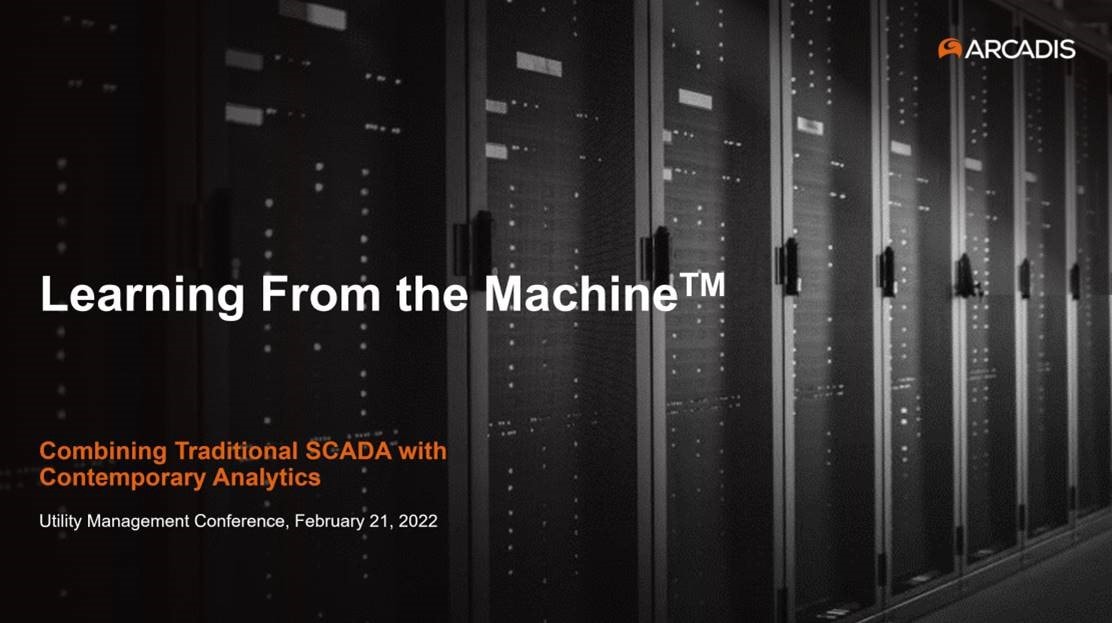Machine learning can be a powerful tool. But many organizations might be surprised by how much they can learn through thoughtful analysis of the historical data already on-hand.
As utilities become fit-for-future, there’s no doubt the conversations around maximizing innovation and efficiency will involve artificial intelligence and machine learning. As powerful as these techniques are, though, they can be complex and costly to implement. Many utilities can find immediate operations and maintenance (O&M) benefits by flipping the script and “Learning from the Machine” instead.
What’s the difference?
Machine Learning: An approach whereby an automated system processes very large amounts of data using complex algorithms and, over time, begins to recognize patterns and recommend or respond in a way that meets stated objectives.
Learning from the Machine: Using large amounts of data already in place and focusing analytical efforts on finding specific insights into your organization. These insights can be descriptive (what just happened?), predictive (what might happen?) or even prescriptive (what should we do when it happens?). You’ll likely get there with less effort than machine learning…and be able to realize tangible benefits earlier.
Keys to Learning from the Machine
-
Be resourceful
SCADA represents the best opportunity to begin learning. It is closely tied to utilities’ core missions around delivering treated drinking water and wastewater. SCADA data also happens be largely instrumentation-driven – the lack of human hands touching the data means that quality is probably very high.
One success story we’ve seen with this: a client of ours, a port, was investigating problems linked to air quality concerns – local environmental activists believed it was due to increased activity at the port. The data told a different story. A detailed analysis of 273 million historical air quality data points (combined from data already existing in over 3,600 Microsoft Excel files!) did indeed reveal a systematic problem beginning at 7 a.m., especially on weekdays. However, combining the air quality data with wind direction data proved that it wasn’t the port’s fault at all; commuter traffic emissions from the nearby metro area were the primary culprit.
It’s a great example of Learning from the Machine’s ability to dig into a specific question. Could machine learning have uncovered this pattern? Sure, but it would have required introducing a new algorithm and giving it time to pick up on the pattern. In this case, all the client needed to do was to identify the problem to be solved and reassess data it already had.
- Be brave
Breaking the mold can pay big dividends. It will be especially important to pursue innovative solutions like these moving forward as water affordability and resilience problems mount. The incoming O&M workforce, for example, can learn from the “historical data machine” as they replace more experienced operators who retire and take their robust institutional knowledge with them.
This is happening in Monroe County, NY, where we are helping the local wastewater agency get more out of the data they already have. Utility leadership and their O&M staff were willing to try something new. That risk reaped rewards: working with Arcadis’ process control experts, Operations now has a tool that helps them use historical data to look forward and see if they are on track to meet their monthly plant compliance goals. Fortune favors the brave, and putting yourself out on a ledge is sometimes the only way to really become fit-for-future.
- Be compelling
The best metrics don’t just inform, they compel people to act. But compelling action takes more than just data. Think real estate – it’s all about presentation, presentation, presentation.
Ensure your data is telling a story that drives buy-in, or else you won’t be able to take your analysis beyond a scientific exercise. If you don’t have that “presentation gene” or artistic flair, find colleagues or partners who can help. Clear and engaging data visualizations might be the difference in winning over skeptics (and making a name for yourself as an innovator). If we are to break down the organizational silos that hold us back, we need to emphasize collaborating using the best of business visualization.
More on Learning from the Machine at UMC
We are excited to be taking a deeper dive into success stories like these at the upcoming Utility Management Conference. Join our workshop on February 21st, 2022, in Orlando, FL, to see what Learning from the Machine can do for you. Or even better, connect with us directly today.








